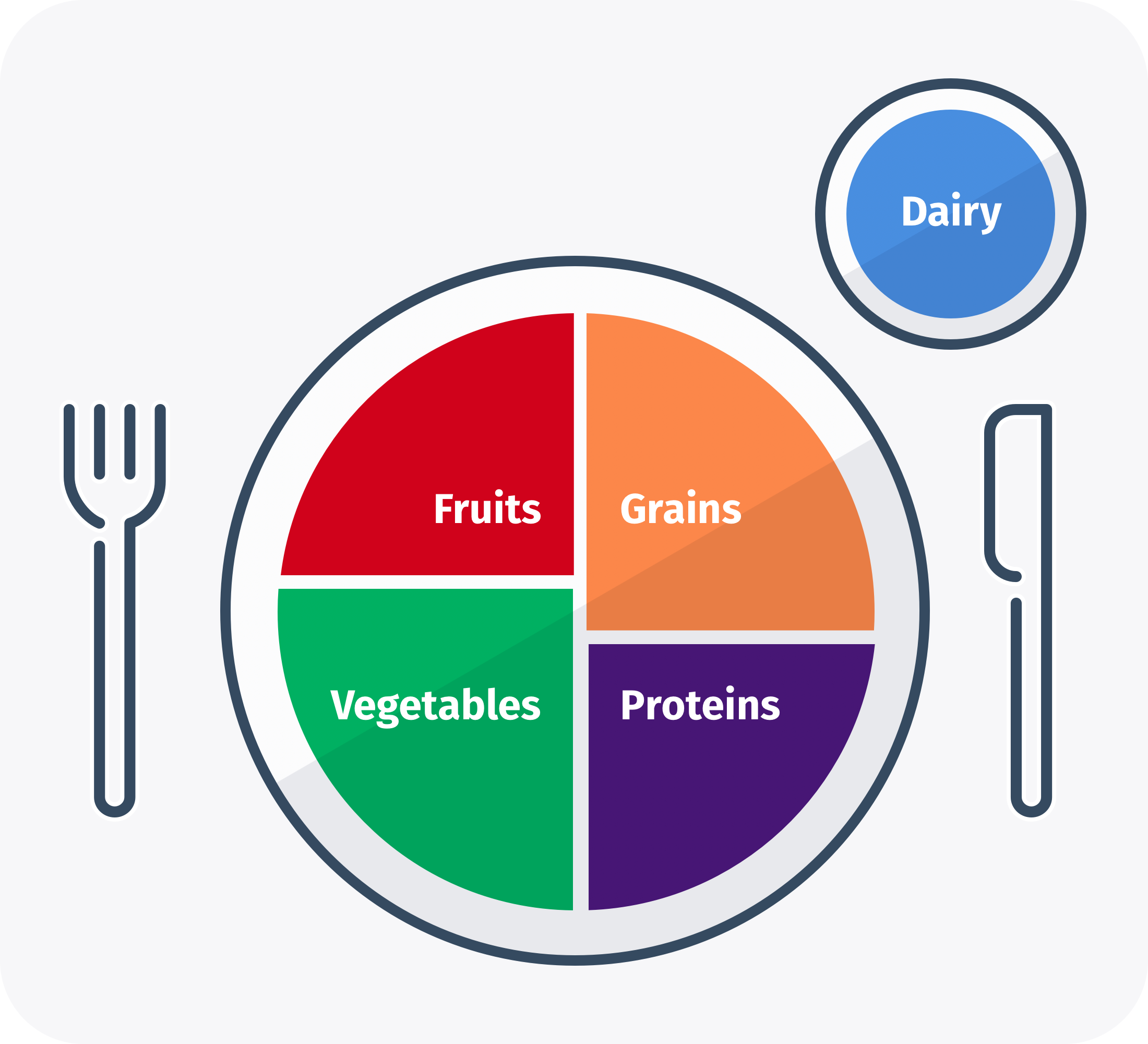The Healthy Plate
Take a look at what's on your plate this week. Eating right will help you feel your best!
Why have a healthy plate?
Eating healthy foods can lower the risks of diseases like obesity, heart disease, type 2 diabetes, and some types of cancer.
What does a healthy plate look like?
A healthy plate is a balance of the 5 food groups. You create it with portions that are heavy on fruits and vegetables.
It also includes the grains, dairy, and other protein-rich foods your body needs.
You can use the picture below to plan for the right amount of foods to eat at each meal.

You have a ton of choices for creating a healthy plate! What appeals to you?
The healthy plate
Fruits. Fruits are low in calories and high in fiber. Dietary fiber helps keep you regular and less prone to constipation. Fruits are also a good source of potassium, vitamin C, and folate, an important B vitamin. Fruits are naturally low in fat and salt, and they're cholesterol free. Whenever you can, choose fresh, whole fruits. Avoid fruits in heavy syrup, which adds sugar and calories.
Vegetables. Many vegetables contain nutrients like vitamin A, which helps protect against infections. Like fruits, they also contain potassium, vitamin C, folate, and fiber. Veggies high in potassium include sweet potatoes, white potatoes, kidney beans, lima beans, tomatoes (tomato sauce counts!), beets, spinach, acorn squash, and yucca. Choose veggies that are fresh or frozen. Canned veggies may have high levels of salt.
Grains. Whole grains are packed with nutrition and much-needed fiber. You can make them a part of any meal. Make whole grains at least half of the grains you eat. Whole grains are excellent sources of fiber, iron, folate, and other B vitamins. Your range of choices includes oats, popcorn, brown and wild rice, whole-grain barley, bulgur (cracked wheat), whole wheat flour, and whole grain cornmeal.
Protein. You can get protein from a broad range of foods. It's best to eat a variety of protein foods each week. Protein-rich foods give you other key nutrients, such as calcium, iron, vitamin B12, and omega-3 fatty acids. Mix it up with eggs, low-fat dairy foods, poultry, lean meats, seafood, nuts, and seeds.